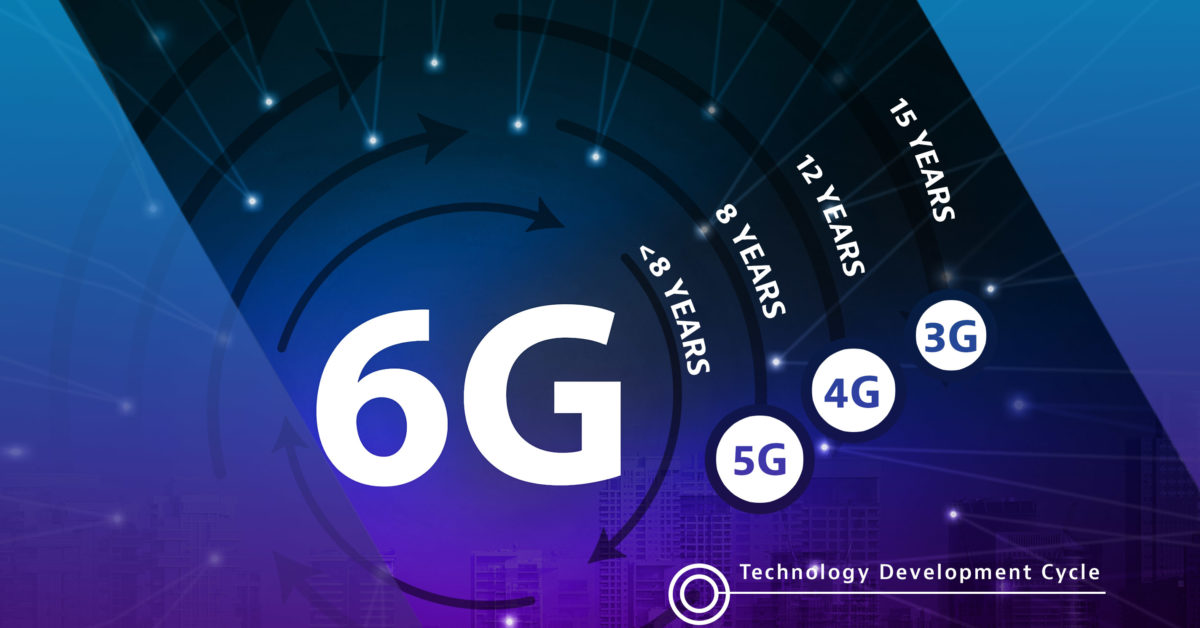6G: Building a Successful Business Case

Learn about VIAVI 5G Solutions
5G is in its infancy, which means challenges – in terms of testing, launching and funding new networks – still remain. Yet major industry players including Apple, Google, Ericsson and Nokia have announced their participation in industry research initiatives to develop 6G. How can we incorporate learnings from the ongoing 5G buildout to effectively guide the vision for 6G?
As always, we need to define use cases and their measurable and long-term benefits to end-users. This approach will not only allow us to learn from mistakes and make improvements, it’ll be cost effective in the long-run. We also need to ensure we are feeding back operational experience – especially lab and field analysis – into future development cycles at the opportune junctures.
Where are we at with 6G now?
History tells us that every next generation telecoms standard is always delivered faster than its predecessor. 3G took 15 years to go from inception to deployment, it took 12 years for 4G, and eight years for 5G. With developments underway for 6G, and with much technology and knowledge already in place, we could see the first networks being rolled out in less than eight years. However, there’s a lot of work to do before that.
The research initiatives mentioned previously are only highlights of industry developments. ZTE and China Unicom announced a collaboration on 6G standards, setting performance targets including peak data rate of 1Tbps and volume traffic capacity of 100Gbps/m3. Not to be left trailing China, the European Parliament published a paper on its vision for the future of technology, anticipating the emergence of 6G as one of the main trends for 2030.
To ensure the race to the next generation technology is a truly global one, the Alliance for Telecommunications Industry Solutions has released its Call to Action report, which explains that the timeline for 6G development has already begun and urges the US to act quickly and collaboratively to gain a competitive edge.
The technology details might not be clear, but what about the business case for 6G?
What’s driving development?
A new communications standard is typically developed in response to market demand. We saw this most prominently with 4G. Mobile users were demanding always-on connectivity, 24/7 social media, high-def live-streamed video, and richer app experiences.
With 5G, we may still be waiting for that killer use case for mass applications, yet there’s at least a demand for the end goal it can enable: ultra-low latency, ultra-reliable networks, and higher bandwidth connectivity. 5G will power enhanced mobile broadband services, but the bigger impact will be on connected industries and the internet of things. The economic payback from investment in 5G has also fuelled action from telcos and others. According to PwC, 5G will unlock new opportunities that’ll result in $13.2 trillion in global economic value by 2035, generating 22.3 million jobs in the 5G global value chain.
Use cases being discussed for 6G include massive global satellite networks that support new services requiring global coverage and smarter, globally connected industrial applications – an evolution of industry 4.0. In its 6G paper, Samsung also cites digital twins (virtual replicas of physical objects) as requiring the kind of data rates and connectivity that 6G will deliver. AI and zero touch networks (involving automation that predicts and addresses network needs) meanwhile, could also help build the business case for 6G.
Can 6G overcome 5G’s challenges?
For 6G to be a success, it will also need to overcome some of the challenges already presented by some of 5G infrastructure, and network and function testing. These include problems with network densification.
We’re already seeing deployment issues with mmWave with 5G, yet there’s talk of even higher frequencies with 6G. This requires further density of networks. At present, higher frequency 5G can deliver higher speeds, however it requires more towers (ideally small cells) as the frequency doesn’t carry very far. Sub-6GHz signals, which are used mostly today, can be carried further but there is less available bandwidth, thus lower speeds. 6G is likely to need contiguous frequency blocks which can only be found at sub-THz and THz bands. The challenge of delivering coverage cost-effectively, will be one that will have to be overcome rapidly if 6G is to take off.
Some players are only just beginning to test and validate 5G infrastructure – this will continue (complete with its own set of unique challenges) with the evolution to 6G. New use cases (yet to be defined, of course) will need to be emulated to ensure networks can support both these and those running on legacy standards. And if operators thought 5G networks were complex, just wait for 6G.
5G networks already have more bandwidth than earlier infrastructure, and demand a much denser fibre fronthaul, midhaul, and backhaul network. 6G will be even more complex and dense. New radio technologies will also have to be validated. These include not only massive MIMO but – perhaps, as cited by Belfast’s Centre for Wireless Innovation – cell-free massive MIMO.
Not many companies have proven that they can successfully test all elements of 5G; 6G will present similar, if not even more complex, problems.
Testing and evolving for 6G
5G may still be getting underway, but we’re certainly on the road to the next technology. Whether its marketing or reality, it’s important to keep the discussions on 6G going. This includes not only looking ahead to the end goal, but working out the business case and its validity, cost implications for deployment and end-users, how we’ll get there and the challenges that need to be overcome.
VIAVI has years of experience in supporting operators evolve and monetise their networks. We were the first to invest in 4G, and quickly developed our product lines to support in the testing and validating of 5G networks and features. Testing the interactions between 4G and 5G, and comprehensive testing of mobility scenario support over NSA and SA, for instance, are crucial for the successful roll-out of new services. Working with other leaders in the field, we’re helping to develop a solid business case for 6G.
To learn more about VIAVI’s leadership in testing, monitoring and assuring mobile networks, visit our 5G site, or download our Test Suite for O-RAN Specifications.


